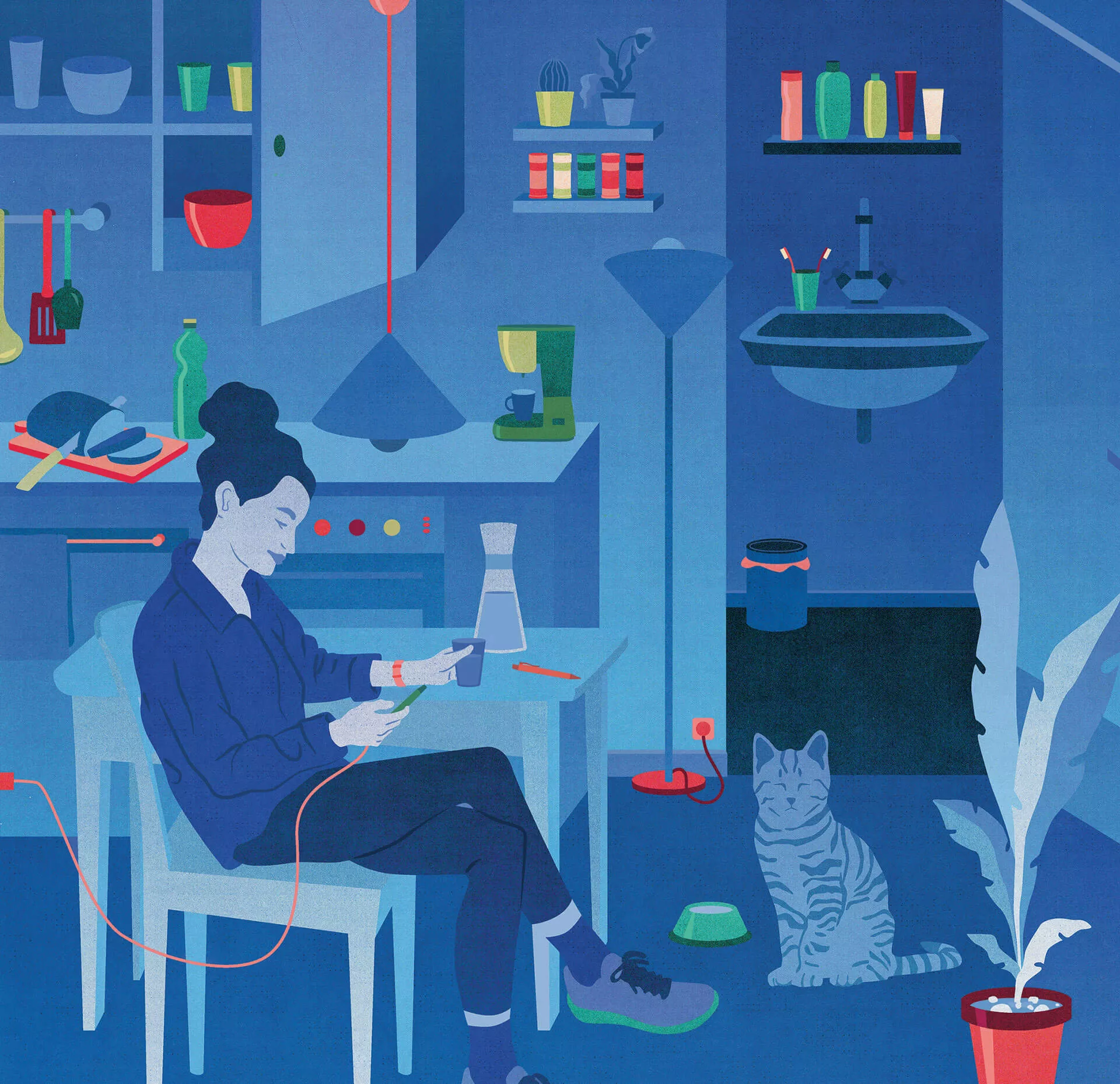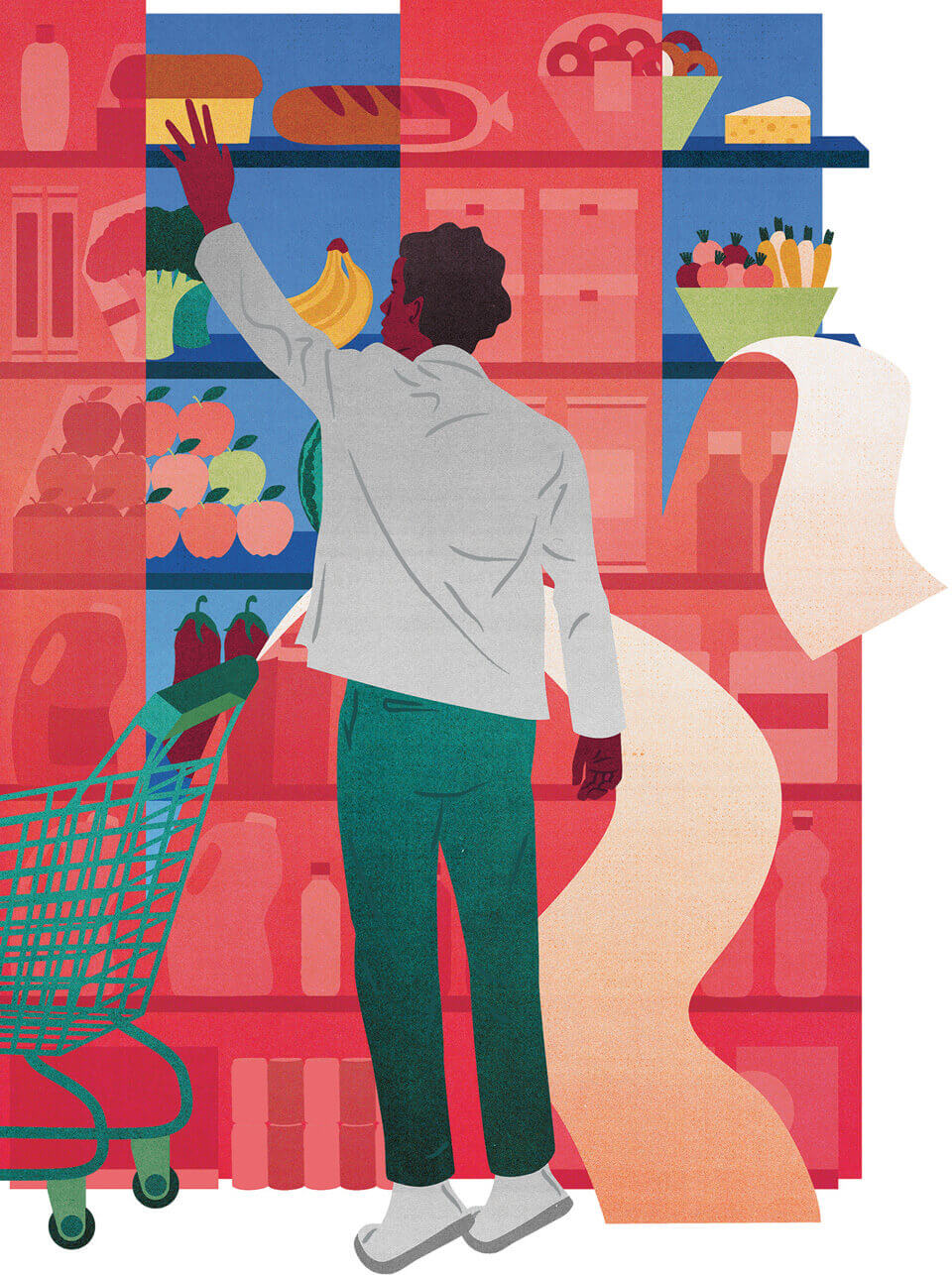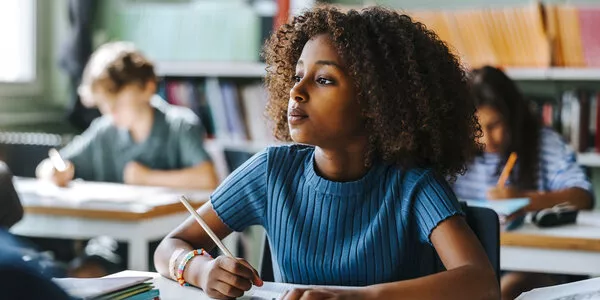
Is plastic on the way out?
Contributors


A plastic wrapped economy
From our toothbrush, to our smart-phone, to the steering wheel of our car, we use at least fifty plastic objects every day. The French philosopher Roland Barthes was certainly not mistaken when he wrote in Mythologies back in the mid-1950s: “Plastic is completely overwhelming in the ubiquity of its use: ultimately, we will invent objects in plastic just for the pleasure of using them (…) the whole world might end up being plasticised.”
At the time these lines were written, the quintessential material of the “Thirty Glorious Years” of post-war economic boom was enjoying an average annual growth in production of 8.5% per year (60 million tonnes in 1980, 187 in 2000, 265 in 2010, 359 in 2018…), an expansion far ahead that of steel, aluminium or cement. The International Energy Agency (IEA) is currently forecasting a 30% increase in demand for plastics by 2030 and 60% by 2050! The resounding success of this material in the global economy is above all due to its tremendous versatility and ability to take almost any form — combined with a low price and qualities such as its lightness, its resistance and overall performance.
Plastic has become ubiquitous in many sectors such as the food industry, construction, transport, health, electronics, etc. Its use has undeniable advantages. In transport, plastics have made it possible to reduce the overall weight of vehicles and reduce fuel consumption. In food, “plastic packaging is the essential element for preventing external contamination (chemical and microbial), preserving quality, traceability of products and reducing losses and waste by protecting food,” explains Nathalie Gontard, director of research at INRA (National Institute for Agronomic Research). In hospitals, disposable plastic accessories help limit the risk of infection, for example.
Degraded ecosystems
However, in recent years, this material has become one of the principle signifiers of the contemporary ecological crisis... In 2014, Achim Steiner, then executive director of the United Nations Environment Program (UNEP), warned: “Plastic may play a crucial role in modern life, but the environmental impact of its use can no longer be ignored.” And it is the undeniably linear nature of the plastic economy, essentially based on the triptych “manufacture, consume, throw away” that is most under question. Nothing illustrates the limits of this model better than the overconsumption of plastic packaging. Most often made from virgin raw materials, it is used and then simply thrown away!
Yet plastic packaging represents 26% of the total volume of plastics produced and is projected to reach 318 million tonnes per year by 2050. This linear value chain generates large quantities of waste, which contributes to pollution and the degradation of natural ecosystems.
The 8.3 billion tonnes of plastics produced worldwide since 1950 has generated around 6.3 billion tonnes of waste (by 2015) of which around 9% was recycled, 12% incinerated and 79% disposed of in landfills or in the natural environment, according to an American study published in the scientific journal Science Advances. To summarise, three-quarters of plastics used end their lives in our land, our fresh water and our oceans! Some 8 million tonnes end up in the oceans each year, which is equivalent to unloading the entire contents of a garbage truck into the ocean every minute. For Nathalie Gontard, it is a “time bomb” because plastics take decades, even centuries to degrade. The damage done to the oceans is considerable. Ingested by fish, deposited in sediments, they infiltrate all levels of the food chain. They cause the death of marine mammals (100,000 / year) and sea birds (1 million / year) by ingestion and entanglement.
According to the Valuing Plastic study, the damage to marine ecosystems amountsto at least $13 billion per year. This waste also causes economic damage to activities such as fishing, maritime transport and tourism.
Collective awareness-raising
This pollution, made visible by the discovery of ocean gyres, huge whirlpools where tonnes of plastic waste accumulate, has raised awareness around the world. “If the current trend continues, in 2050 there will be more plastic than fish in the oceans,”[by weight] alerted António Gutteres, Secretary General of the United Nations, in June 2018. Innovative projects — “The Ocean Cleanup” by the Dutchman Boyan Slat, “The Sea Cleaners” by the Franco-Swiss Yvan Bourgnon, “Plastic Odyssey” by the French Simon Bernard and Alexandre Dechelotte… — have been developed aiming to collect waste at sea. Even if they are unlikely to solve the problem alone, they are raising awareness around the world and showing that it is imperative to act collectively. The 2019 Microplastics Mission, which sampled the estuaries of nine major European rivers on the scientific expedition schooner Tara, delivered its first results: microplastics are ubiquitous in rivers and are “pollutant sponges”. Research has begun in 17 partner laboratories and will hopefully provide more information.
Tackling plastic waste in the environment and developing a circular economy requires the participation of all actors in the value chain and the long-term commitment of businesses, governments and communities
Multi-stakeholder engagement
One thing is certain: the solutions to combat this pollution are to be found on earth.
Several NGOs (WWF, Ellen MacArthur Foundation, Greenpeace, etc.) are challenging politicians and manufacturers, inviting them to change the way we both produce and use plastics.
In June 2018, in Canada, the G7 countries — except Japan and the United States — as well as the European Union signed a voluntary charter on plastic, which aims to reach a recycling rate of 100% by 2040. In May 2019, some 180 UN member states and parties to the Basel Convention concluded an agreement in Geneva on the regulation of exports of plastic waste. In June 2019, in Japan, the G20 countries reached an agreement to reduce plastic waste in the marine environment.
Industrialists are also mobilising. In January 2019, around 30 international companies launched the Alliance to End Plastic Waste (AEPW) in London, which is committed to paying more than $1 billion — with the goal of reaching $1.5 billion — within five years, to enable the deployment of solutions to reduce and manage plastic waste and promote its recycling. “Tackling plastic waste in the environment and developing a circular economy requires the participation of all actors in the value chain and the long-term commitment of businesses, governments and communities”, said Antoine Frérot, CEO of Veolia and vice-president of AEPW.
Plastic and the circular economy

Recycling plastic is a real challenge. As it is often used in combination with other materials, successful recycling can be even more difficult. Furthermore, each time it is recycled, plastic degrades, losing its most sought after properties, and thus its advantages. For these reasons, only 16% of the plastic produced is recycled with 66% being thrown away. Yet faced with this dilemma, possible technological solutions are often somewhat lacking.
Mechanical recycling of plastic – for example, making new PET bottles from old plastic – turns out to be quite inefficient, because 25% of the plastic used ends up as waste. Given this situation, a team of American scientists is now exploring a promising new avenue: chemical recycling. The researchers wanted to transform plastic into a new material. The technique consists of breaking down the chemical bonds which make the polyethylene robust and durable, to obtain a liquid oil which can be used as a lubricant, for example. There are, however, two major difficulties. Firstly, the process is very energy intensive because the plastic has to be heated to 300°C for thirty hours to produce the oil. Secondly, there will, of course, be the question of how to recycle this oil in turn, once used!
Other approaches are needed
Reuse. It’s about shaking up the design of objects using plastic (as well as other materials) so that each component can be used again after use. This way it is no longer necessary to discard the whole product after use, just the worn or damaged components.
Replacement. Rather than throwing away single-use plastic packaging – 50% of all plastic products produced every year – it would be better to replace them. Governments have finally begun to grasp the scale of the problem (see opposite), and companies, such as the French group Sphère – which owns the Alfapac brand and who designed bags made from potato starch, are also tackling the issue. Citizens are also taking the initiative, no longer hesitating to buy “in bulk”, and refusing to take unnecessary plastic retail packaging home with them after purchase.
Upcycling. Some craftspeople and companies consider plastic waste a new raw material. For example, the French trainer manufacturer Veja has designed shoes made from recycled plastic fabrics that are enjoying worldwide success. To manage our precious resources and to address the plague of plastic waste, we will certainly have to change our ways, abandoning the current linear system of plastic use – we exploit, we produce, we use, we discard – and adopt the millennial principles behind the circular economy.
Consumers in action
If it is impossible to do without plastic entirely, reducing its use — in particular that of plastic packaging (60% of plastic waste) — has become a major concern. In the EU, several single-use plastic products will be banned from 3 July 2021. In France, the National Assembly voted on 9 December 2019 to phase out all disposable plastic objects by 2040, whilst studying Launched in the UK on social networks, the Plastic Attack movement, now active in many countries, organises protests in supermarkets: “Everyone goes to the supermarket to do their shopping with reusable packaging. After going to the checkout, we remove all unnecessary packaging and leave it to distributors (…),” explains Fanny Vismara, one of the leaders of the movement in France. “With Plastic Attack, we are looking to have an impact on all the actors in the chain in order to change practices.”
Consumers have an essential role to play in reducing the production of waste by favouring products with little or no packaging, and durable, reusable and repairable goods. And they have a major responsibility: to sort the products intended for recycling. In France, four bottles out of ten are never sorted.

Further developing recycling
Plastic recycling is seen as the preferred way to promote a circular economy, transforming waste into a resource. The Ellen MacArthur Foundation has calculated that 95% of the value of packaging is lost each year, equivalent to $80-120 billion. France has set itself the ambitious objective of “100% recycled plastics by 2025” in its Climate Plan. It has a long way to go: France only recycles 26.46% of plastic packaging (2017 figure), far behind countries like Lithuania (74.2%), Bulgaria (65%), Slovenia (60%) ) or the Netherlands (50%) and Germany (48%).
The plastic recycling rate is low (9% worldwide) compared to other materials such as iron (70%), paper (60%) or glass (50%). This is due to the lack of infrastructure for collecting and processing waste, particularly in developing countries. However, even in developed countries, there is considerable room for improvement (the recycling rate is only 30% in Europe). The great variety of plastics, incompatible with each other, as well as their dispersion in complex products — electrical and electronic equipment for example — makes their recycling difficult.
Eco-design — designing a product to be recyclable — is key to improving the situation. The recycled plastic market is struggling to develop for reasons of quality, availability and price. Virgin material, the price of which is correlated to that of petroleum, is sometimes less expensive than its recycled equivalent ...
As a result, recycled plastic represents just 10% of world plastic demand.
Industry players innovate
“The impetus will come from the principal buyers of plastic when they impose recycled plastic in their specifications,” said Sébastien Petithuguenin, vice-president of Environment for the Federation of Plastics and Composites in France and general manager of Paprec. Several of them are already leading the way. Danone has committed to 100% of its plastic packaging being recyclable, reusable or compostable by 2025. Similarly, Unilever plans to halve the use of virgin plastics in its packaging by the same date, as does L’Oréal, which launched 100% recycled packaging a year ago.
Another example is Renault, which has a proactive policy of integrating recycled materials into its vehicles, with an average recycled plastic rate of 30% at the end of 2014. Meanwhile, in October 2019, Coca-Cola unveiled a prototype bottle made from recycled plastic marine waste. A technical feat that suggests technological advances are occurring in the field of recycling. Further upstream, the large producers of plastic resins, Dow, BASF, LyondellBasell, Total, etc, have put their research teams on the job. Total is betting on the development of chemical recycling at very high temperatures, which would increase the rate of reuse of plastics.
And governments are taking incentive measures too. Following the European directive of June 2019, plastic bottles sold in the EU will have to contain at least 25% recycled plastic by 2025 and at least 30% by 2030. In February 2019, in the Netherlands, more than 65 companies signed the Dutch Plastic Pact, aimed at increasing the use of recycled plastic.
The mobilisation of all stakeholders is essential to facilitate a circular plastic economy, as illustrated by innovative actions from the South. Launched in 2013, the Plastic Bank initiative now employs more than 2,500 waste collectors recruited from disadvantaged populations in Haiti, Brazil and the Philippines. Recycled in Plastic Bank centres, the plastic is sold to companies under the name of Social Plastic®. In Indonesia, the Project Stop programme, created in 2017, started in the city of Muncar, with the aim of incorporating local communities and the informal sector. According to its founders, funding urban waste management and plastic waste recovery systems through the informal economy is a determining factor in solving the plastic waste crisis.
Three questions for Nathalie Gontard

What are the main advantages of bioplastics?
Let me share some background information first. Bio-based bioplastics, the most significant in terms of volume, are made from food resources (corn, wheat, beet, sugar cane, etc.) but are not necessarily biodegradable, like bio-PET.
They do not solve the pollution problems caused by the fragmentation, diffusion and persistence of plastics in the environment and in living organisms. The term bioplastics also refers to biodegradable plastics from petrochemicals like conventional plastics. Our laboratory is working on the development of another type of bioplastics that are more interesting from an environmental point of view. They are derived from renewable raw materials and agricultural residues that do not compete with human or animal food. These plastics are biodegradable at the end of their life and return to the natural carbon cycle like any other organic matter.
They can be used in composting bio-waste on both an individual and industrial level. The major benefit of these materials is that they do not remain in the environment. In addition, they are just as recyclable as other plastics.
What are the applications of these types of bioplastics?
Bioplastics such as PHA that we are developing can be used to replace conventional plastics for food packaging and for many other applications (biomedical, electronics, automotive, agriculture, fishing, etc.). For the time being, the market is underdeveloped because the industrial base needs to set up the facilities necessary for their manufacture, which differ from those used for plastics from the petrochemical industry. Manufacturers are taking this route in Brazil, Germany and China, where the Tianan group, one of the world’s largest producers of these bioplastics, is based.
Start-ups are also being launched, such as Innoven SRL in Italy, which uses organic agricultural waste to produce PHA and energy through anaerobic digestion. Major petrochemical manufacturers are interested in the subject. The fact remains that these bioplastics cost twice as much as conventional plastics, the prices of which are very low. Public incentives, including financial incentives, might be needed to promote the scaling up of the use of these new materials.
You coordinate European projects in partnership with China. What are the objectives of this international cooperation?
Within the framework of the NoAW (No Agro-Waste) project, the objective is to develop processes for the recovery of agricultural residues to produce bioenergies, biofertilisers and biofuels. These residues vary by region: vine shoots in Languedoc, potato or sweet potato in China ...
This project brings together 32 partners with a budget of 22 million euros. China is very involved in the search for substitutes for conventional plastics.





